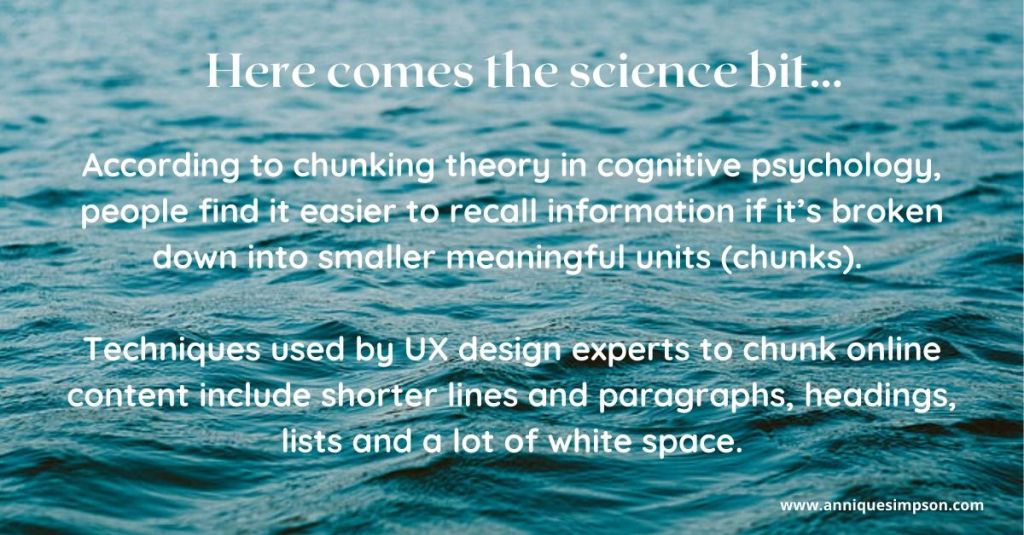It’s National Simplicity Day on Sunday (12 July); a day where people ditch the internet and life’s complications in favour of nature, calm and effortlessness.
Simple doesn’t come easy for me. But if there’s one thing the current pandemic has taught me, it’s that there’s beauty in the basics. Everything else is just noise.

And we know a lot about noise as communications professionals (sigh!). It’s the bane of our work lives and one of the biggest obstacles to us persuading people to think, feel or do something differently.
But it is possible.
I’ve spent my recent coronavirus ‘sabbatical’ exploring different tools and techniques to #KeepCommsSimple. The solutions were (annoyingly) obvious.
Keep your comms simple
1) Get to know your audience
I cannot stress (to myself) the importance of understanding your audience before you take action. Our communications outputs live and die by our employees/customers/patients etc – whether we like it, or not. Some simple(ish) ways to do this include:
- Spend time with your colleagues – attend different team meetings, work in different locations
- Review existing data like HR records, employee survey results and exit interviews
- See what employees are saying or interacting with on your digital comms channels
- Piggyback on an upcoming employee survey with a few comms questions
- Pick 10 colleagues at random and give them a call or take them out for a coffee (one day…)
Free resources to get you started:
- Government Communication Service – different approaches to segmenting your audience (a key step in understanding your audience)
- GCS – questions to ask when listening to your audience
- Dr Kevin Ruck – highlights from his 2020 report on employee listening in organisations
2) Focus on the big questions
When I bagged my first communications manager role, I was obsessed with documenting my communications strategies using elaborate templates.
However, I quickly learnt:
- senior stakeholders don’t care about your ‘workings out’ – they want to know what you plan to do and the proposed benefits
- a communications strategy is essentially a set of answers to questions – no matter the format.
Here are some guiding questions I use to help me…
Write an internal communications strategy (thanks Rachel Miller!)
- Where you are now (background)?
- Where you’re heading/want to be (objectives)?
- How you are going to get there?
- How long it will take and why (timeline)?
- What is involved along the way (tactics)?
- How you’ll know when you’ve got there (measurement)?
Free resources to get you started:
- Matt Batten – five simple steps to creating a top-notch strategy (you’ll love the last one!)
- CIPR Inside – the ‘what’ and ‘how’ of communication measurement
3) Keep your content brief
I love detail so creating concise and informative content is a skill I have to practice regularly. I’ve learnt some great tips on creating simple and scannable written content by exploring other fields, including copywriting, user experience design and psychology.
- Ideal paragraph length = 5 lines max
- Ideal sentence length = 17 words (25 words max)
- Words under four syllables long
- One idea per paragraph
- Use the active voice
- Put your key points in the first and last line or paragraph
- Use headings, subheadings and bulleted/numbered lists

Free resources to get you started:
- Writing apps Grammarly and Hemingway – helps make your writing clear and engaging
- Alive with Ideas agency – how to use the ‘rule of three’ to create powerful messages
- Plain English Campaign – list of simple words to replace overused complex ones
How do you #KeepCommsSimple?
Share your top tips in the comments section below (please – I really need the help!) or on Twitter.

I’ve always worked with the Comms team, but never really looked too much into what they actually do. This post was a great introduction to what goes on behind the scenes a little. Thanks for sharing this!
LikeLike
Thanks for the feedback Stuart – glad you found it enlightening!
LikeLike
I’ve found your article through Twitter. Before that, I didn’t even know about National Simplicity Day.
In regards to your question on how to keep communications simple, I’d like to suggest two important things: transparency and expectations. If the expectations for each role are completely clear and the communication is open and transparent, it will lead to less confusion and thus to a simpler communication strategy.
LikeLike
Thank you Fred. I completely agree – transparency and clarity around expectations are two of the easiest ways to create simple and effective comms. Even the slightest departure from this can cause considerable issues. Now to convince senior leaders…
LikeLike
Haha, yes, that can be a challenge. In that case, numbers work well in my opinion. For example that “Engaged employees generate 20% more in sales, 21% more in profitability and are 50% less likely to leave than their disengaged colleagues” (Forbes) and that “an empowered office environment can increase worker productivity on cognitive tasks by 25%” (Inc) and so on. However, I feel we are on a good path nevertheless.
LikeLike